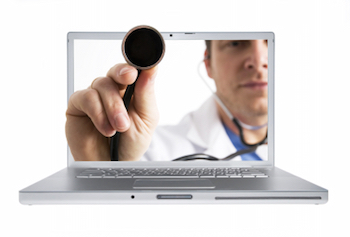
As a small medical practice, comparing how your business runs today with even a few short years ago can make it seem light years apart. Technology doesn’t just change by the year, in some cases it seems to change every day. Go back ten years to a time when a cell phone was simply a phone. By today’s standards, even that would seem archaic at best. Today’s smartphones are used for everything from texting with your kids, to checking the latest scores of the big game, to keeping your life on track with a multitude of apps throughout your busy day.
Yes, in most cases, we as a culture can no longer imagine life without a 5 inch screen nestled in our pockets, ready for our every request and action. We can no longer imagine life without a mobile device ready and waiting at our beck and call.
And in many ways that’s a good thing. Its made our lives easier than ever, especially as a health care provider. Instead of waiting to take notes and perform research when you have time to sit down at the computer, with even just a few moments to spare you can immediately take care of business, anywhere, any time.
Yet how safe is it to rely on your mobile device for everything? Are you ensuring enough safety precautions to not only ensure your safety, but the safety of all those you do business with?
Start with passwords and user authentication
Mobile devices can and should be configured to require a password, personal identification number (PIN) or a passcode in order to gain access. It can be masked to prevent people from seeing it. Your mobile device should also be activated to lock the screen after a set period of inactivity to present unauthorized users from accessing it.
Install and enable encryption
Encryption protects all information stored and sent via a mobile device. While most mobile devices have built in encryption capabilities, you can also purchase and install additional encryption tools based on your needs.
Install and activate remote wiping and disabling
Remote wiping allows you to erase data from your mobile device from a remote location in the even its lost of stolen. Remote disabling allows you to lock or completely erase data on a mobile device in the event its lost or stolen. The difference being remote disabling has a lock feature that can allow you to unlock the data once the device is found – a great feature if you know you’ve simply misplaced your device.
Install and enable a firewall
A firewall intercepts incoming and outgoing connection attempts and blocks or permits them based on a predetermined set of rules and criteria. By establishing a personal firewall on your mobile device, you can protect your data from unauthorized connections.
Install and enable security software
A mobile device is simply a personal computer in a small format. Its subjected to the same malicious files, applications, viruses, spyware and attacks as your laptop or desktop. Make sure you install appropriate security software to protect you and keep you safe from future attacks. Zscaler, for example, provides a mobile security system that not only provides advanced security measures for your mobile platforms, but also ensures corporate compliance as well. Also make sure you run updates on a regular basis to keep it up to date.
Install and enable only reputable apps
With millions of apps available to download and use on your phone, its easy to find things that make your life a little easier. Yet just because they’re available in the app store doesn’t make them safe for use. Do your due diligence and make sure you download and use reputable apps with great ratings and regular maintenance to keep them up to date and bug free.
Use appropriate Wi-Fi networks
Public Wi-Fi networks can be an easy way for unauthorized users to gain access and intercept your information. Whenever you login to your system, send or retrieve data, make sure you are using a secure and encrypted connection.
Delete all stored data before discarding or reusing
When its time to replace your mobile device with an upgraded model, be sure to thoroughly wipe or delete all data stored on your mobile device. The US Department of Health and Human Services has specific guidelines available to ensure the proper way for dealing with the deletion of sensitive information.


